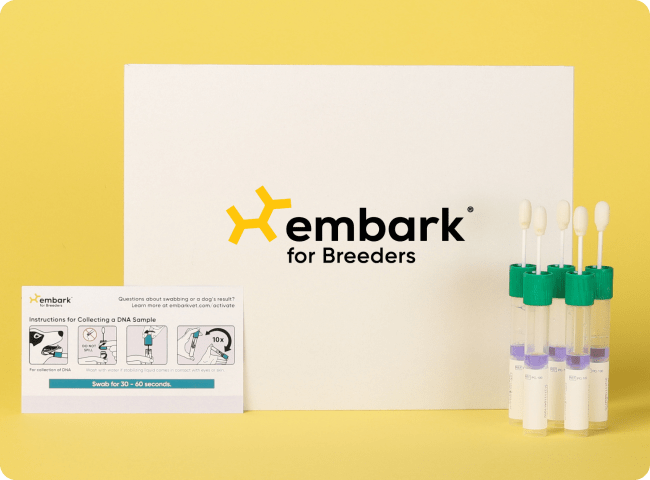Protein Losing Nephropathy, PLN
Protein Losing Nephropathy causes inappropriate loss of protein in the urine. Certain parts of the kidney act as a sieve where ions, small molecules like urea, and water are filtered out of the blood into the urine. In PLN, the sieve is compromised and protein moves in the urine. This leads to muscle wasting, abnormal fluid accumulation in the skin and limbs, and kidney failure.
-
Signs and symptoms
Affected dogs exhibit muscle wasting, abnormal accumulation of fluids in tissue (usually first observed as edema in the limbs), and excessive thirst and urination. PLN dogs are at high risk of clotting problems due to a loss of clotting proteins. Finally, excessive protein is toxic to the kidney, so dogs develop signs of kidney failure: vomiting, poor appetite, lethargy, and changes in thirst and urination.
PLN has an adult onset. -
Diagnosis
PLN is diagnosed through genetic, urine and blood testing. Additional tests, including blood pressure and abdominal ultrasound, may be recommended based on your dog’s clinical signs. There are secondary causes of PLN not associated with genetic mutations.
-
Treatment
Current therapies for PLN are aimed at reducing the protein load on the kidney and fighting the toxic effects of protein wasting. Dietary and medication recommendations are based on how clinically advanced the PLN is. Dialysis, kidney transplants, and gene therapy are being explored as potential treatment options.
-
What to do if your dog is at risk
Actions
- Regular veterinary visits and laboratory testing will be vital to catching this disease in any early stage where it can be more easily managed.
- Closely monitor your dog for changes in their drinking and urination patterns.
-
Genetic Information
This NPHS1 mutation was first described in Soft Coated Wheaten Terriers and Airedale Terriers with PLN. This mutation always accompanied a mutation in the nearby KIRREL2 gene. Both genes code for proteins that determine the size of the molecules that can pass into the urinary space. The two mutations are tightly linked, and together are considered a risk haplotype; ie, dogs with the NPHS1 mutation virtually always have the KIRREL2 mutation.
Dogs with one or two copies of this mutation are at risk for developing PLN, although dogs with two copies have a much higher incidence of disease. This mutation is incompletely penetrant, meaning that other genetic and environmental factors contribute to the development of this disease.
Gene names:
NPHS1 ‐ chr
Inheritance type:
complex
Citations:
-
Breeds affected
This health condition affects the following breeds
Learn about your dog’s unique genetic health
Dog owners
Breed identification, health and trait insights, personalized care recommendations, and the world’s first canine relative finder—all in one leading dog DNA test.
Learn about the report for dog ownersShop the test
Breeding programs
Embark’s test for breeding programs is one comprehensive DNA test designed with your needs in mind.
Learn about the report for breedersShop the test




